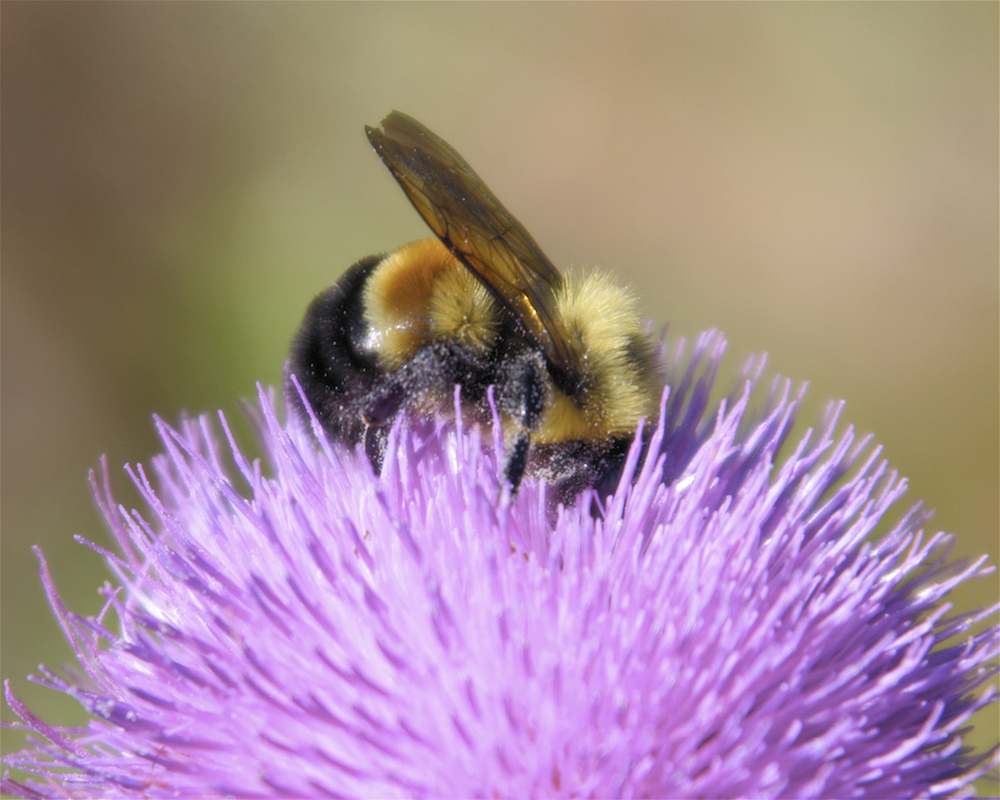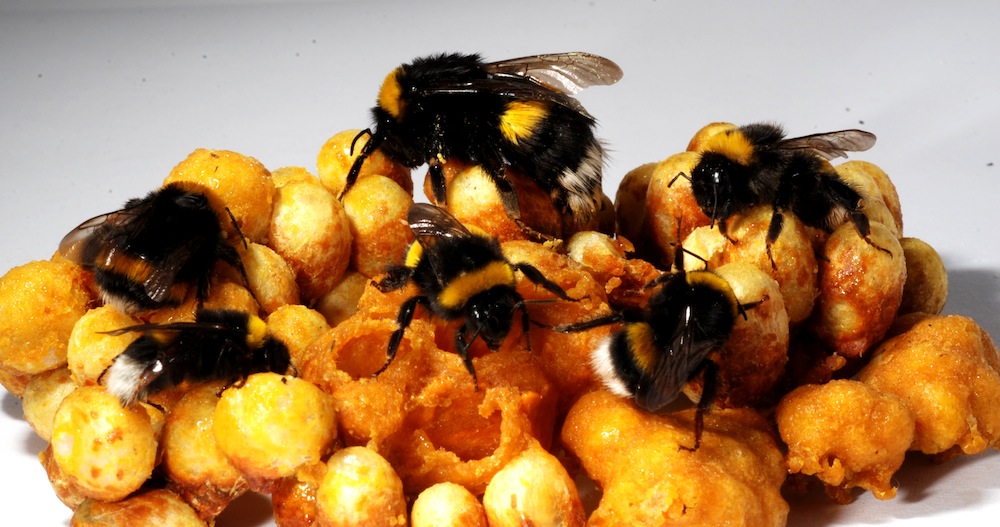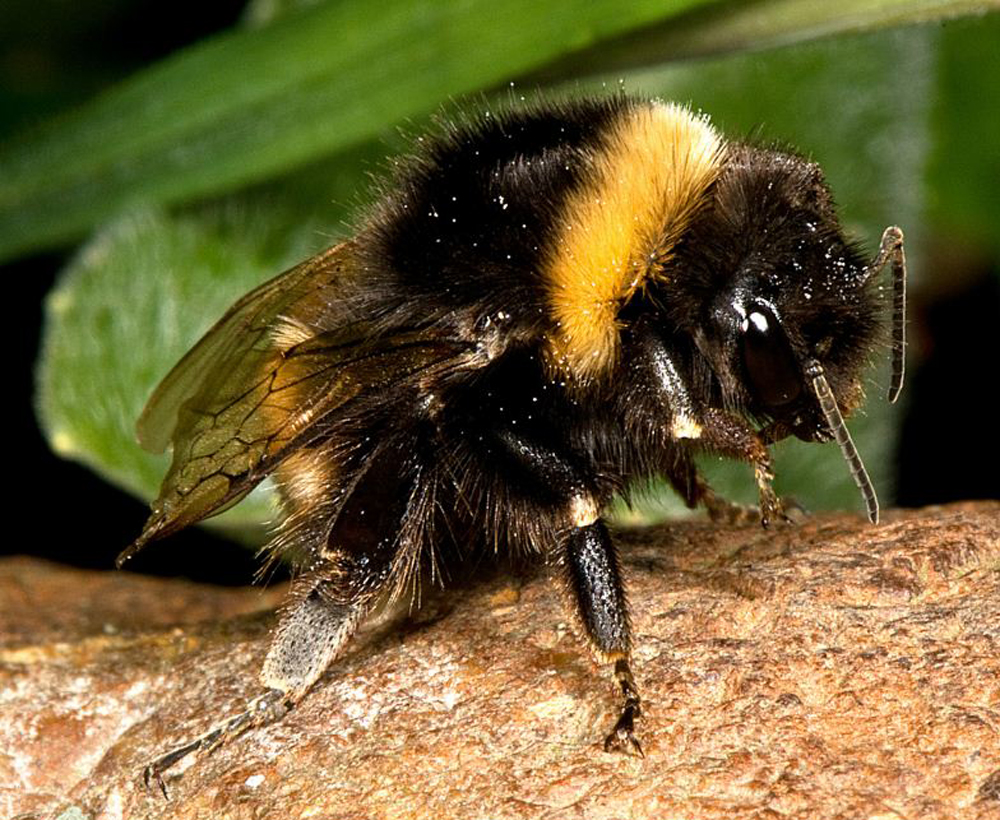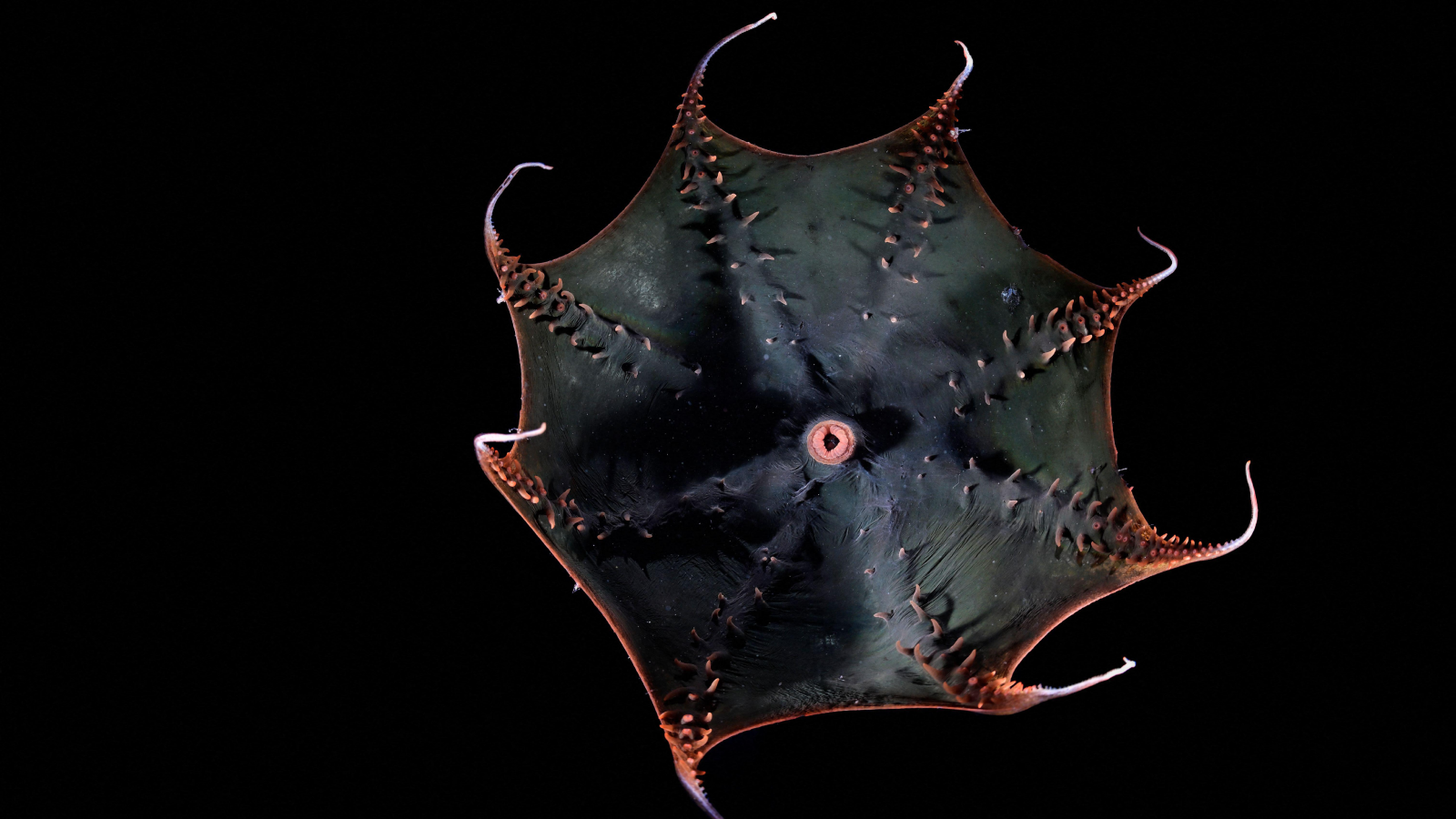Facts About Bumblebees

Bumblebees are large, fuzzy insects with short, stubby wings. They are larger than honeybees, but they don't produce as much honey. However, they are very important pollinators. Without them, food wouldn't grow.
Two-thirds of the world's crop species depend on animals to transfer pollen between male and female flower parts, according to ecologist Rachel Winfree, an assistant professor in the department of entomology at Rutgers University. Many animals are pollinators — including birds, bats and butterflies — but "there's no question that bees are the most important in most ecosystems," she said in a 2009 article in National Wildlife magazine.
While other animals pollinate, bumblebees are particularly good at it. Their wings beat 130 times or more per second, according to the National Wildlife Federation, and the beating combined with their large bodies vibrates flowers until they release pollen, which is called buzz pollination. Buzz pollination helps plants produce more fruit.
Size
There are over 255 species of bumblebees, according to the Integrated Taxonomic Information System (ITIS), so bumblebees can be many sizes. The largest is the queen of the Bombus dahlbomii, which can grow up to 1.6 inches (4 centimeters) long. This is three to four times longer than the American bumblebee, according to Scientific American.
Flight
It has often been said that bumblebees defy aerodynamics and should not be able to fly. However, a recent study resolved the enigma and showed how the tiny wings keep the bee in the air. The study, published in the journal Proceedings of the National Academy of Sciences in 2005, used high-speed photography to show that bumblebees flap their wings back and forth rather than up and down.
The wing sweeping is a bit like a partial spin of a "somewhat crappy" helicopter propeller, researcher Michael Dickinson, a professor of biology and insect flight expert at the University of Washington, told Live Science in a 2011 article. However, the angle to the wing also creates vortices in the air — like small hurricanes. The eyes of those mini-hurricanes have lower pressure than the surrounding air, so, keeping those eddies of air above its wings helps the bee stay aloft. [Related: Explained: The Physics-Defying Flight of the Bumblebee]
Habitat
With so many species, it isn't surprising that bumblebees are found all over the world. For example, the largest bumblebee is found in Argentina and Chile and the rusty patched bumblebee is found in the United States and Canada.
Get the world’s most fascinating discoveries delivered straight to your inbox.
Bumblebees usually build their nests close to the ground — under piles of wood, dead leaves and compost piles — or even below ground in abandoned rodent tunnels, according to Orkin.
Habits
Bumblebees are some of the most social creatures in the animal kingdom. A group of bumblebees is called a colony. Colonies can contain between 50 and 500 individuals, according to the National Wildlife Federation.
A dominant female called the queen rules the colony. The other bees serve her or gather food or care for developing larvae. During the late fall, the entire colony dies, except for the queen. She hibernates during the winter months underground and starts a new colony in the spring.
Diet
Bumblebees eat nectar and pollen made by flowers. The sugary nectar provides the bees with energy while the pollen provides them with protein, according to The Bumblebee Conservation Trust. They make honey by chewing the pollen and mixing it with their saliva, according to Animal Diversity Web (ADW). They feed the honey to the queen and the developing brood.
Offspring
The queen is the mother of all the bees in a colony. After waking from hibernation, the queen finds food and looks for a good location for a nest. Once the nest is found, she lays her eggs and stores up food for herself and the babies, according to ADW.
The queen sits on the eggs for about two weeks to keep them warm. When the eggs hatch, the queen feeds pollen to the baby bees, called larvae. At two weeks old, the larvae spin cocoons around themselves and stay there until they develop into adult bees.
The queen only takes care of the first batch of babies. The first batch grows into worker bees that will clean and guard the nest, find food and take care of the next batch of baby bees. The queen is left to do nothing but lay and hatch new eggs.
Bees born in late summer are male bees, called drones, and future queen bees. Both leave the nest as soon as they are mature. The males from other nests mate with future queens and then die. After mating, the future queens fatten themselves up and hibernate throughout the winter.
Classification/taxonomy
Here is the taxonomy of bumblebees, according to ITIS:
Kingdom: Animalia Subkingdom: Bilateria Infrakingdom: Protostomia Superphylum: Ecdysozoa Phylum: Arthropoda Subphylum: Hexapoda Class: Insecta Subclass: Pterygota Infraclass: Neoptera Superorder: Holometabola Order: Hymenoptera Suborder: Apocrita Infraorder: Aculeata Superfamily: Apoidea Family: Apidae Subfamily: Apinae Tribe: Bombini Genus: Bombus
Conservation status
Many bumblebees are listed as endangered, vulnerable or near threatened by the International Union for Conservation of Nature and Natural Resource's Red List of Threatened Species.
The variable cuckoo bumblebee is listed as critically endangered by the IUCN and is considered one of the rarest species in North American. The rusty patched bumblebee is also listed as critically endangered, and in early 2017 it became the first wild bee in the continental United States to get federal protection under the Endangered Species Act, according to Scientific American.
There is a lot of discussion as to why the overall be population is declining. Some scientists think that there may be a sickness killing off the bees. Others think pollution, global warming or lack of native flowers may be to blame.
Other facts
Bumblebees are larger than honey bees and generate more heat. This allows them to work during cooler weather.
Bumblebees don't die when they sting. This is trait found in honey bees.
Bees are covered in an oil that makes them waterproof.
Queens shiver to warm up and keep eggs toasty.
Additional Resources





